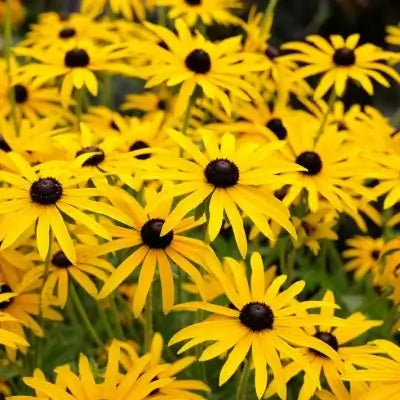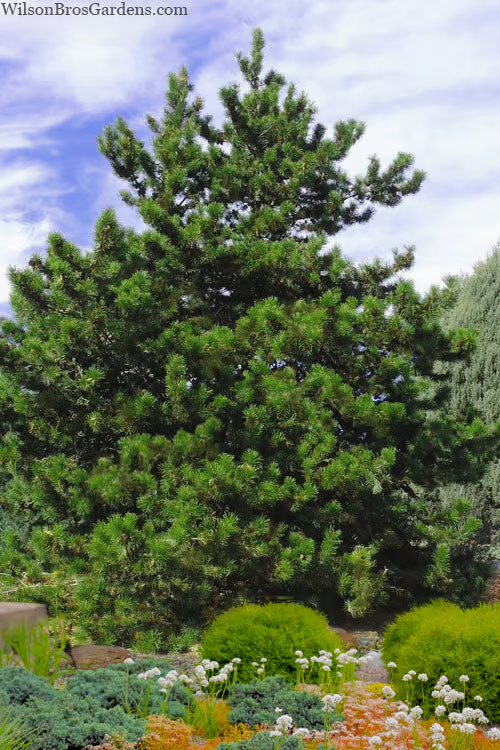
perennial plants for sales
Thrives in poor soil conditions
Low maintenance, hardy tree species
Resistant to pests and diseases
Thrives in
ZONE 4ZONE 5ZONE 6ZONE 7ZONE 8Planting Season:
Nov-AprilWhen you add one plant to cart, it automatically adds the second one free on Bogo deals.
Virginia Pine Tree is a small to medium-sized evergreen native to the eastern United States. It features twisted, bundled needles and small cones. It is often used for reforestation and as a Christmas tree. This native evergreen conifer offers many benefits when landscaping, enhancing outdoor spaces' aesthetics, functionality, and ecological value. This native evergreen conifer possesses distinctive features that contribute to various aspects of landscape design.
They have tall, straight trunks with dense, pyramid-shaped crowns of deep green needles. Their symmetrical and conical form adds elegance and verticality to landscapes, making them excellent choices for creating focal points or adding structure to garden designs.
The evergreen nature further enhances its landscaping value. Its foliage retains its color and structure year-round, providing consistent color and structure even during winter. This characteristic is precious for maintaining visual interest and adding vibrancy to landscapes when many other plants are dormant.
It contributes to the landscape's ecological health by providing habitat and food sources for various wildlife. Birds and small mammals consume these seeds, while their branches offer shelter and nesting sites. By incorporating it into landscaping, individuals can create environments that support local ecosystems and encourage biodiversity.
Its adaptability to various soil types and ability to tolerate different environmental conditions enhance its landscaping benefits. It can thrive in well-drained soils and is well-suited for urban and rural landscapes. This adaptability allows homeowners and landscape professionals to use it in various settings, from residential yards to parks and natural areas.
In conclusion, it offers a range of benefits that enrich landscaping projects. Their stately appearance, year-round greenery, ecological contributions, and adaptability make them valuable to outdoor spaces. By integrating it into landscape plans, individuals can create visually appealing, ecologically supportive, and structurally sound landscapes that showcase the unique qualities of these majestic conifers while enhancing the overall appeal and vitality of their surroundings.
The Virginia Pine tree (Pinus virginiana) is a magnificent evergreen that graces the landscapes of the eastern United States with its distinctive charm and resilience. Standing tall and proud, it can reach heights of up to 60 feet, with a narrow, conical crown that gradually broadens with age. This native species is celebrated for its adaptability and power to flourish in diverse environments, from dry, rocky soils to moist, well-drained ones.
One of its most striking features is its rugged and picturesque bark, which starts as a smooth, silvery-gray surface when young and matures into a rough, scaly texture as it ages. The bark's reddish-brown hue adds warmth to the winter landscape, making it a standout among the snow-covered terrain.
Its needle-like leaves are relatively short and bundled in pairs, measuring around 1 to 3 inches. These needles are arranged in tufts at the ends of the stems, giving them a distinctive, feathery appearance. They boast a rich, deep green color that provides year-round interest and subtly contrasts with its reddish bark.
Come springtime, it produces small, inconspicuous flowers that give rise to distinctive cones. These cones, usually 1 to 2 inches long, sport a conical shape and are brown. As they mature, they release their seeds to continue the growth cycle.
They are known for their hardiness and adaptability, making them an ideal candidate for reforestation and landscaping projects in challenging environments.
They are often chosen for windbreaks, erosion control, and wildlife habitat enhancement.
With its graceful form, distinctive bark, and enduring presence in the American landscape, they stand as a testament to the resilience and natural beauty of native types. Its role in the ecosystem and its aesthetic appeal make it a treasured addition to the eastern forests and landscapes it calls home.
What is it used for?
Because of its full, closed crown and relatively symmetrical form, Pinus virginiana is used for reforestation, soil conservation, and local Christmas trees. Its wood is also used for pulpwood and fencing.
What are the best conditions for it to grow?
They have high light demand and prefer growing in soils with good drainage; however, it is adaptable to poor, sandy, or shallow, rocky soils. These plants grow in USDA hardiness zones 4 to 8 and can grow in different weather conditions; hence considered to be very resilient.
How do we care for them?
For them, provide frequent water in its first year to develop a good root base; after this, it becomes drought-resistant. It is advised to remove the dead or spoiled branches every year.
What are the benefits of them?
Indeed, they provide habitats for small mammals and birds and provide forage. They are also effective for stopping soil erosion, for beautification purposes, and for use as windbreaks and screens.
What is the lifespan of them?
They usually reach 65 to 90 years of age. It grows fast when young, but as they age, the rate at which it grows decreases; this type is best suited for short to medium-term plantation programs, especially for timber production and decorative use.

Height at Maturity
Over 25 Feet
Care
Virginia Pine Trees thrive in well-drained soil and require moderate watering, especially during dry periods. Trim to release dead or diseased branches and maintain a central leader. In early spring, fertilize with a balanced fertilizer to support healthy growth.
Plant Reproduction
Virginia Pine spreads by seeds released from cones, carried by wind
Plant bare root trees during the dormant season in early spring or late fall (November through April). Dig the hole twice as wide as the roots so the soil is well-drained. Position the tree so the root flare is at or just above ground level. Fill the hole back with the soil you dug from and water. Maintain soil moisture, especially in the tree's early years, by providing deep, regular watering. Apply a 2-4 inch mulch away from the trunk at the base to retain moisture and suppress weeds. Prune trees during the first few seasons to establish strength and resilience, remove damaged branches, and continue maintenance pruning as the tree matures. Regularly inspect for pests and diseases and apply integrated pest management practices. Protect young trees from mechanical damage and extreme temperatures with tree guards, and stake them if necessary for support, removing the stakes after one or two years.
Shipping date depends on the date displayed and chosen when you order from the product's page.
We only accept returns on plants verified dead. If you think your plants have died, we offer a 1 year warranty, please use use this File a Claim Link to verify dead plants and start with return warranty process.




Robust Evergreen Foliage:
Virginia Pine provides year-round greenery with its dense, needle-like leaves that stay vibrant through all seasons.
Rapid Growth:
Known for its fast growth rate, this pine quickly establishes itself, making it ideal for those looking for quick results.
Hardy and Adaptable:
Thrives in various soil types and conditions, offering resilience and ease of care for any garden setting.
Natural Privacy Screen:
Its dense canopy creates an effective natural barrier, providing privacy and reducing noise in your outdoor space.
Caring Tips
Each box contains detailed care instructions and information about your product. But here's the basics.
Care Tips
Virginia Pine Trees thrive in well-drained soil and require moderate watering, especially during dry periods. Trim to release dead or diseased branches and maintain a central leader. In early spring, fertilize with a balanced fertilizer to support healthy growth.
Light Requirements
Virginia Pine Trees thrive in complete sun, needing at least six hours of explicit sunlight daily. They can tolerate some shade but perform best with ample sunlight, making them ideal for open areas where they can receive maximum light exposure.
Hardy Planting Zones
4 • 5 • 6 • 7 • 8
How often should I water my plants?
How do I know if my plant is getting too much or too little sunlight?
What should I do to prepare my plants for winter?
What are the signs that my plant needs fertilizing?
How can I prevent pests from damaging my plants?
How do I choose the right plant for my climate zone?